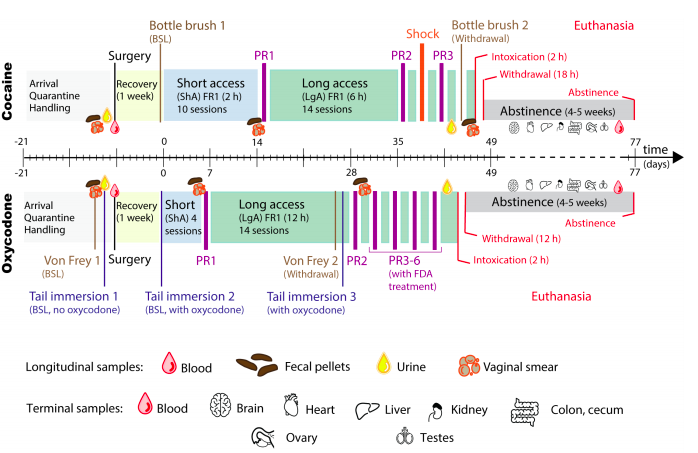Substance use disorders (SUDs) are pervasive in society (Grant et al., 2016; Vadivelu et al., 2018), with dramatic societal and individual consequences. There are currently no FDA-approved pharmacological treatments for cocaine use disorder. While there are FDA-approved treatments for opioid use disorder, the efficacy of these medications varies, and the relapse rate remains high (De Cid et al., 2008; Eap et al., 2002). To improve current treatments and discover new ones, the individual differences in both the propensity to develop addiction-like behaviors (Vowles et al., 2015) and the response to treatment need to be better understood. A critical hurdle in the effort to identify biomarkers and targets is the limited number of repositories that include longitudinal samples, with a detailed characterization of SUD.
To address this, two new biobanks are created – cocaine biobank and 136 the oxycodone biobank. These repositories contain >20,000 samples from ~1000 individual rats.

Experimental design of addiction-like behavior phenotyping and sampling
The biobanks are cost-effective for the scientific community and created with an open-source mindset (White et al., 2019). Samples are freely available to non-profit organizations. Genetic and behavioral data will be deposited in a public repository like the rat genome database (Smith et al., 2020) or Gene Network (Sloan et al., 2016). Protocols are disclosed here and online. The addiction biobanks are particularly useful for researchers from fields outside of addiction, who do not have the resources or expertise to perform chronic intravenous self-administration.
Click here to read more.